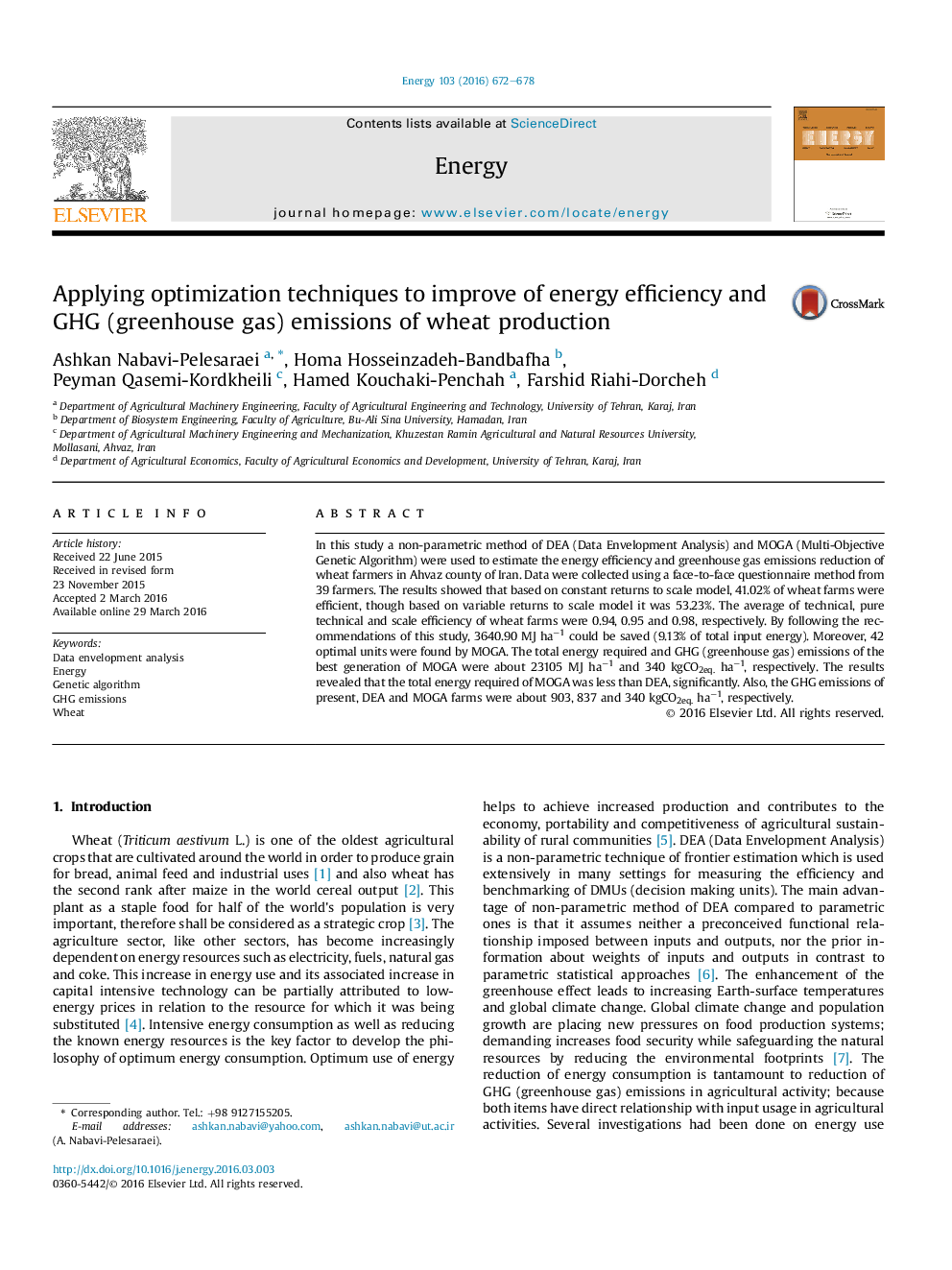| Article ID | Journal | Published Year | Pages | File Type |
|---|---|---|---|---|
| 8073913 | Energy | 2016 | 7 Pages |
Abstract
In this study a non-parametric method of DEA (Data Envelopment Analysis) and MOGA (Multi-Objective Genetic Algorithm) were used to estimate the energy efficiency and greenhouse gas emissions reduction of wheat farmers in Ahvaz county of Iran. Data were collected using a face-to-face questionnaire method from 39 farmers. The results showed that based on constant returns to scale model, 41.02% of wheat farms were efficient, though based on variable returns to scale model it was 53.23%. The average of technical, pure technical and scale efficiency of wheat farms were 0.94, 0.95 and 0.98, respectively. By following the recommendations of this study, 3640.90 MJ haâ1 could be saved (9.13% of total input energy). Moreover, 42 optimal units were found by MOGA. The total energy required and GHG (greenhouse gas) emissions of the best generation of MOGA were about 23105 MJ haâ1 and 340 kgCO2eq. haâ1, respectively. The results revealed that the total energy required of MOGA was less than DEA, significantly. Also, the GHG emissions of present, DEA and MOGA farms were about 903, 837 and 340 kgCO2eq. haâ1, respectively.
Related Topics
Physical Sciences and Engineering
Energy
Energy (General)
Authors
Ashkan Nabavi-Pelesaraei, Homa Hosseinzadeh-Bandbafha, Peyman Qasemi-Kordkheili, Hamed Kouchaki-Penchah, Farshid Riahi-Dorcheh,
